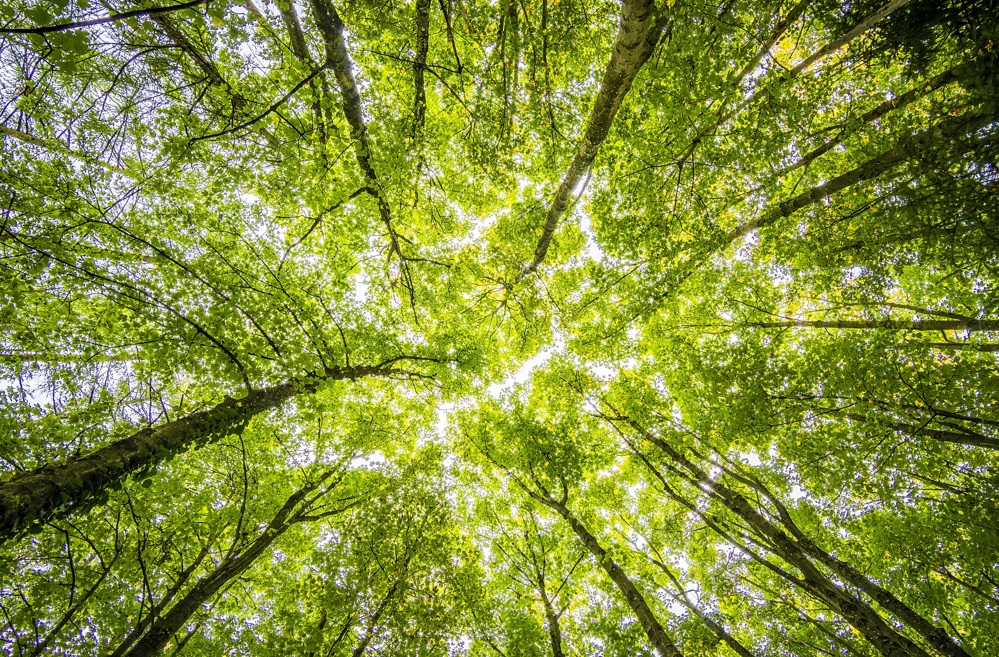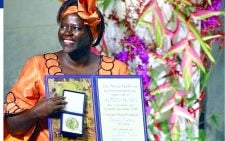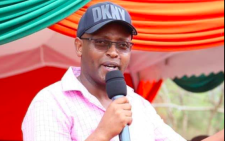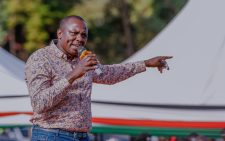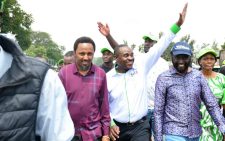Looking back at Wangari Maathai a Kenyan legend
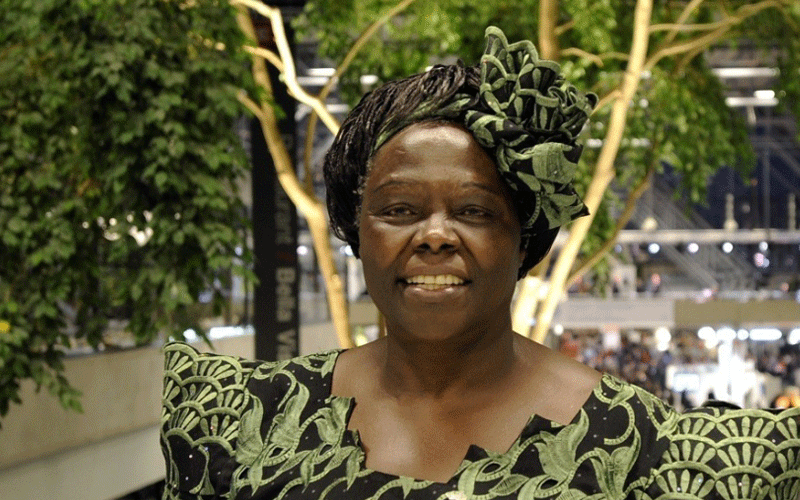
Grief and an immense sense of loss gripped the nation, and the world of environmental conservation, when Nobel laureate Wangari Muta Maathai passed away on September 25, 2011, succumbing to ovarian cancer at the age of 71. Her demise was only partly atoned for by the collective satisfaction of her incredible lifetime achievements for environmental, political, social and economic justice.
When Wangari Muta Maathai embarked on her crusade to protect the environment in the 1970s, little did she imagine that three decades later she would become one of the most recognised Kenyans globally.
What began as environmental activism transformed into political stoicism, challenging and upstaging powerful figures, as illustrated in the epic confrontations with President Daniel Arap Moi in the late 1980s and early 1990s that enhanced her global stature. Her heroic political and human rights feats remain indelibly etched in Kenya’s history.
Wangari, together with other pro-democracy activists and mothers of political detainees in the second liberation struggle memorably challenged Moi’s authoritarian rule on March 3, 1992 – exactly 33 years ago today.
Through the Green Belt Movement (GBM), a non-governmental organisation (NGO) she founded in 1977, her successes in forest conservation, education, and women’s political and economic empowerment endure, and remain acclaimed at home and globally, making her a truly Kenyan legend.
Wangari Maathai would turn in her grave to learn that in present-day Kenya, the environmental and human rights injustices and activities she relentlessly fought against have crept back to haunt Kenyans who remember her taking on land grabbers’ cartels, resisting forest encroachment, logging and other environmental and human rights injustices.
Now, these acts of injustice are perpetrated by the same cabal of corrupt, powerful figures and capitalist establishments led by land grabbers, illegal loggers and plunderers of Kenya’s vast natural resources, fossil fuel and extractive industry predators and their lobbyists.
Foot soldiers
Wangari’s indefatigable spirit continues to lie in eternal repose, content that the battle she waged won some outstanding victories. Her allies and battalions of foot soldiers at the grassroots and at high tables on the global stage continue to robustly fight these forces causing environmental harm, now exacerbated by the impacts of climate change.
GBM is cherished for its advocacy of human rights, democratisation of access to public lands, alongside environmental justice issues such as the role of women’s traditional ecological knowledge in addressing degradation and desertification.
The movement continues through many partnerships to fulfil its mission of mobilising community consciousness or self-determination, justice, equality, reduction of poverty, and environmental conservation using trees as the entry point.
Today, 20 years after winning the 2004 Nobel Peace Prize, Kenyans continue to celebrate her as a national icon – a social, environmental and political activist. She became the first African woman to win the Nobel Peace Prize, which was just one among her many “firsts”.
Born in the village of Ihithe in Tetu, Nyeri County, on April 1 1940 (she would have been four weeks shy of her 85th birthday today), Wangari went to Ihithe Primary School and later St Cecilia’s Intermediate Primary School at Mathari Catholic mission, where she completed her studies in 1956, first in her class, before joining Loreto High School, Limuru, the only Catholic high school for girls in Kenya then.
Her many firsts emerged long before she founded the Green Belt Movement as I found out from my brief association with the late Hilary Ng’weno, acclaimed editor, author and publisher of the Weekly Review, and the late Tom Mboya’s widow, the late Pamela Mboya, who passed away before we could complete a project we were working on.
But it was not before I gained some insight into among other eye-opening information how Pamela and Wangari Muta became some of the first Kenyans to benefit from Airlift Africa, also called the ‘Kennedy Airlift’, started in 1959 by Tom Mboya, who sought support for promising Kenyan students to get college and university education in the United States and Canada.
The Airlift brought hundreds of students from East Africa between 1959 and 1963, supported by many North American educational institutions, foundations, and individuals such as the African American Students Foundation (AASF) and African Americans including the famous singer Harry Belafonte, baseball star Jackie Robinson, Oscar Award winner Sidney Poitier and the renowned Black rights activist Martin Luther King Jr.
The airlift got its popular nickname in September 1960 when then Senator John F. Kennedy, in a close presidential campaign against Richard Nixon, arranged a $100,000 donation from the Joseph P. Kennedy Jr Foundation to cover airfare for the autumn group of East African students just as the programme was running out of funds.
The programme began in 1959 when Tom Mboya embarked on a speaking tour of the US to seek scholarships for students from East Africa. The first batch of 81 students touched down in New York City on 11 September 1959. They would be settled in various universities in the US and Canada. In Kenya, Mboya liaised with Julius Kiano and Kariuki Njiiri (both alumni of US universities) to identify potential students for the airlifts.
The airlifts were opposed by the British colonialists, who did not want America meddling with any of its colonies. British officials spread propaganda among top Kenyan students that American education was inferior to British education. The airlifts officially ended in 1963 when most of the graduates went back to help build newly independent Kenya.
Pioneering Kenyans
The inclusion of women in the airlifts demonstrated foresight on the part of the airlift organisers. One of the beneficiaries was Wangari Muta, the first African female and first environmentalist to win the Nobel Peace Prize, Leah Marangu, who later became the first female head of a university in Africa, Prof Miriam Was, prominent HIV/Aids researcher and former Chancellor, Moi University and Dr Ng’endo Mwangi, the first Kenyan female physician.
Notable beneficiaries and her over 800 peers in the airlifts included the late former Vice-President Prof George Saitoti, prominent Ugandan academic Prof Mahmoud Mamdani, Prof Reuben Olembo, scientist and environmentalist and former Deputy Director, UNEP, Ugandan Prof Nathan Saziru, Simon Thuo Kairo (Kenya’s first Ambassador to China), Prof Washington Aggrey Okumu, Maina wa Kinyatti (author, Mau Mau historian, winner of the PEN freedom to write award) and renowned editor Philip Ochieng, who mentored many journalists- including Yours Truly.
Others are former Cabinet ministers Maina Wanjigi, Dr Zachary Onyonka, Arthur Magugu, Wilson Ndolo Ayah and trade unionist Ochola Ogaye Mak’Anyengo. Contrary to some media reports, Barack Obama Sr, the first husband of Stanley Ann Dunham and Kenyan-born father of the first Black President of the US, Barack Obama, was not a direct beneficiary of the airlifts.
Inspired by the airlift programme, applied to various American universities and received private funding to attend the University of Hawaii. He also received help from the AASF, with the help of Mboya and so was part of the airlift generation. As a beneficiary of the airlift, Wangari Muta studied in the US, earning a bachelor’s degree from Mt St Scholastica and a master’s degree from the University of Pittsburgh.
She went on to become the first woman in East and Central Africa to acquire a Doctor of Philosophy after completing her dissertation on the development and differentiation of gonads in bovines, receiving her PhD from the University of Nairobi in 1971, the same year her daughter Wanjira Maathai was born in December. Her other children are Waweru and Muta.
Not that such outstanding achievements would surprise those who have closely followed the remarkable life of Wangari Muta, as she preferred to be called after a divorce from her husband Mwangi Mathai in 1979.
A court ruling in favour of her estranged husband in the divorce case saw him demand she drops his name, but she declined. In a show of the strength of defiance against male chauvinism, she chose to add an extra prefix ‘a’ and henceforth became universally known as Wangari Maathai.
In 1984 Wangari was honoured with the Right Livelihood Award for “converting the Kenyan ecological debate into mass action for reforestation. Wanjira has followed in the tradition of her mother’s exemplary environmental activism footsteps as a formidable force in climate, development and environmental advocacy.
Managing Director for Africa and Global Partnerships at the World Resources Institute (WRI) and Africa adviser to the Bezos Earth Fund, she is shaping NGO and philanthropic work on the continent, directing attention, research, and funding to helping the most climate-vulnerable places and local communities.
Previously, Wanjira led the iconic Green Belt Movement as former co-chair of the organisation her mother founded, pioneering investment in women entrepreneurs in renewable energy, and is driving a movement to restore 100 million hectares of African land.
She has tapped into the reservoirs of her mother’s indomitable spirit to raise the prominence and visibility of global issues such as climate change, youth leadership, sustainable energy and landscape restoration.
Wanjira currently serves as Chair of the Wangarĩ Maathai Foundation, as a Leadership Council member of the Clean Cooking Alliance. She is a member of the High-Level Group of the Africa-Europe Foundation and the European Climate Foundation Advisory Council.
She is one of the few Six Seconds EQ practitioners in Kenya and was named one of TIME magazine’s most Influential African Women in 2018, 2020,2021 and 2023.
Her mother was an academic and the author of several books and has been described not only as an environmental and political activist but also an intellectual who has made significant contributions to thinking about ecology, development, gender, and African cultures and religions.
Wangari Maathai’s story would be incomplete without my personal recollections of some close encounters on occasions and issues that brought instant fame and infectious admiration for her courage and intellectual probity. These unique qualities, attributes and achievement that will tag her in history as one of Kenya’s leading figures of national pride and global distinction.
I first became acquainted with Wangari and her Herculean exploits in the early days of my journalism career. Then President Moi and the ruling party Kanu, realising the power of the Press in the complex dynamics of democracy, sought to control the flow of information alongside the government’s ownership of the Kenya Broadcasting Corporation (KBC).
Moi and Kanu achieved this goal when they bought Nairobi Times from Hilary Ng’weno and baptised it Kenya Times. A few years I joined the Kanu-owned newspaper as a reporter and later worked as an editor. That’s when the epic battle between Moi, British publishing mogul and then owner of the Mirror Group Newspapers Robert Maxwell, against Wangari Maathai, erupted.
Global respect
Kanu regime’s battle against her had started more than a decade earlier after she had founded GBM when she was working with the National Council of Women of Kenya (NCWK), where she partnered with the executive director of the Norwegian Forestry Society, Wilhelm Elsrud.
She also received “seed money” from the United Nations Voluntary Fund for Women, which funds allowed GBM to expand. After the 1985 third UN global women’s conference in Nairobi, where she met UNIFEM head Peggy Snyder, the movement received funding from UNEP and expanded, leading to the establishment of the Pan-African Green Belt Network.
Soon after, 45 representatives from 15 African countries travelled to Kenya over the next three years to learn how to set up similar programmes in their own countries to combat desertification, deforestation, water crises and rural hunger.
The attention Wangari got in the media led to her being honoured with numerous global awards and the government demanded that the GBM separate from the NCWK, believing the latter should focus solely on women’s issues, not the environment. Therefore, in 1987, Wangari stepped down as chairperson of NCWK and focused on GBM, the separate NGO.
In the late 1980s, the government came down against her and the GBM. The single-party regime opposed many of the movement’s positions regarding democratic rights, invoking a colonial-era law prohibiting groups of more than nine people from meeting without a licence.
In 1988, the GBM carried out pro-democracy activities such as registering voters for the election and pressing for constitutional reform and freedom of expression. The government had carried out electoral fraud in the elections to maintain power, claimed Wangari. That’s when she converted from her environmental activism into a full-time political activist, pitting her directly against Moi and his authoritarian regime.
-Tomorrow we look at how Wangari Maathai took on the feared Kanu regime and got the eyes of the world watching…
